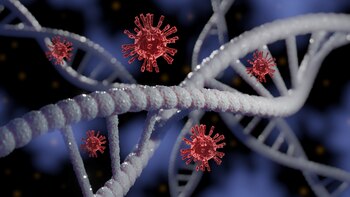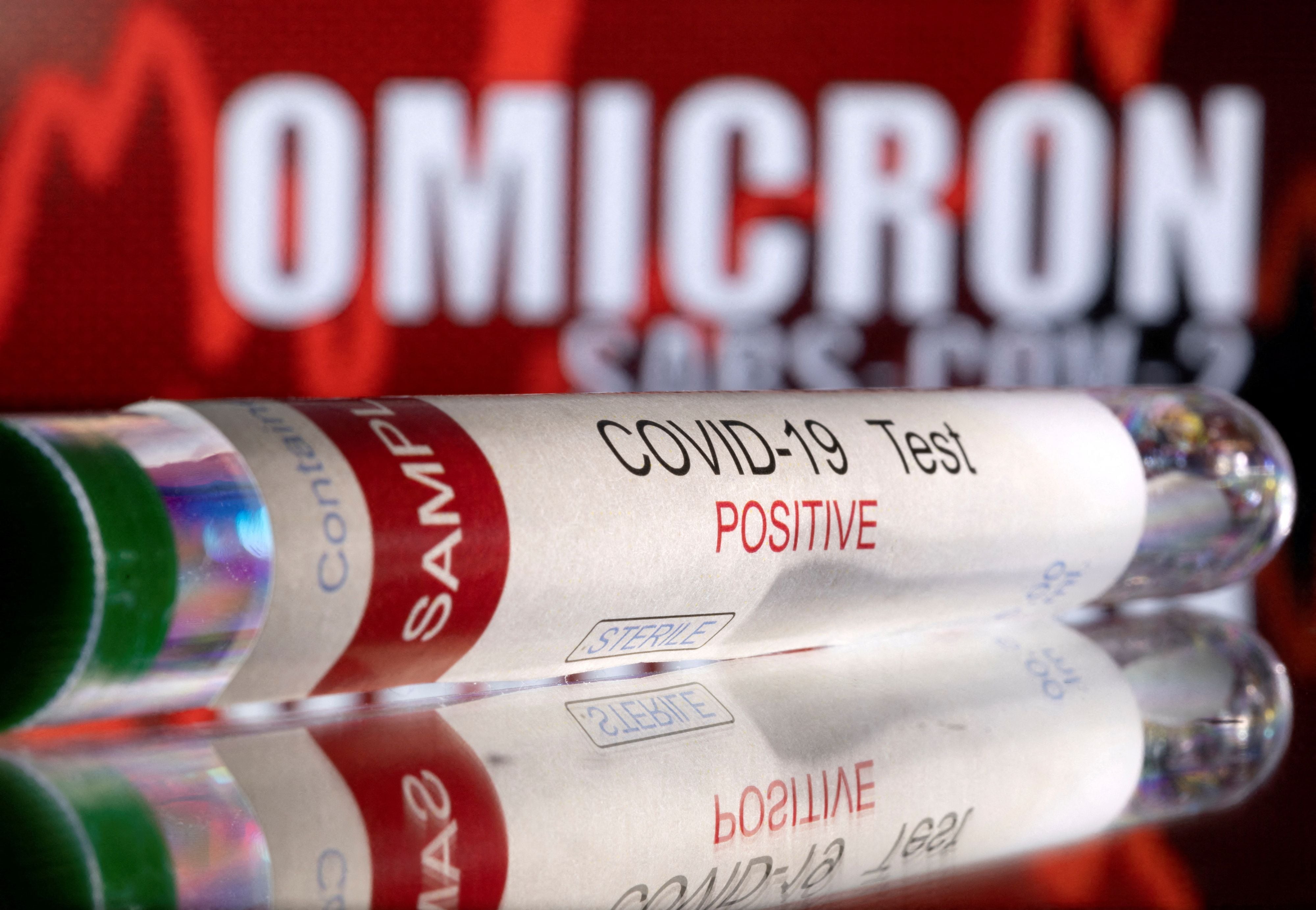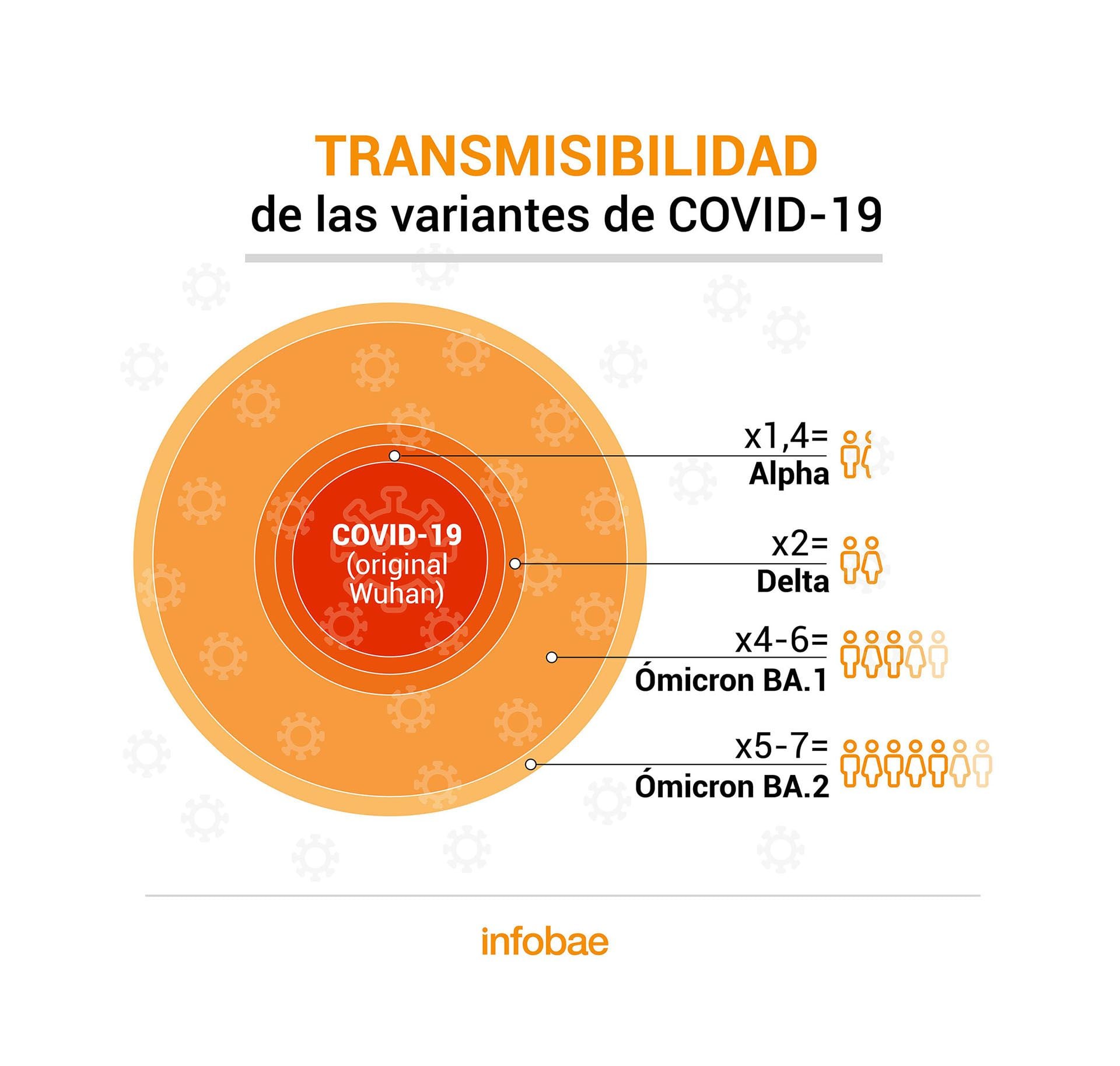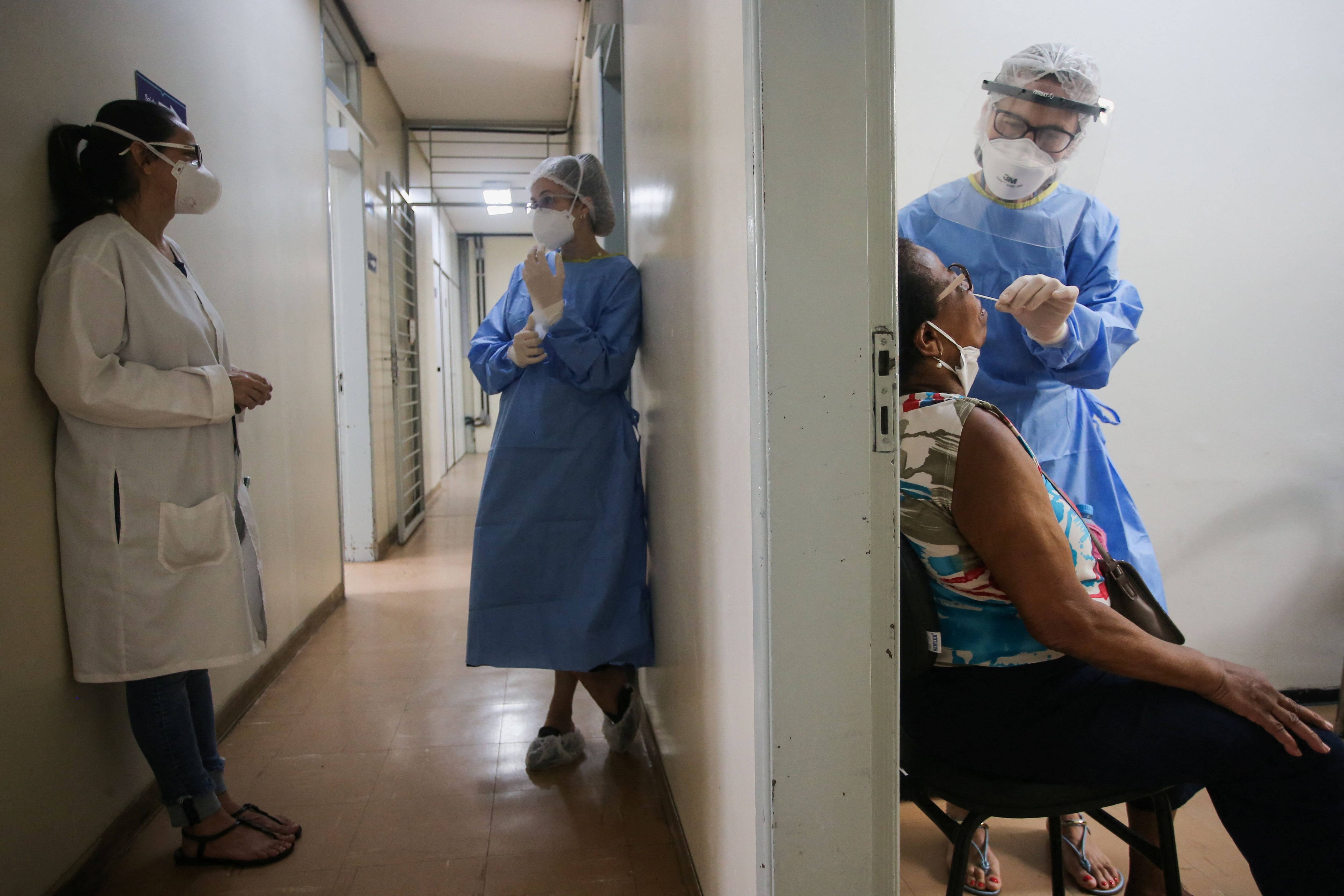
Infectious disease experts at Harvard University, who monitor the global spread of the BA.2 subvariant of Ómicron, assess the impact it can have on the development of the pandemic: Are record-breaking infections similar to those caused by Ómicron expected between December and January? Can steep rises in Hong Kong, China and Germany be replicated in the rest of the world?
“Many regions of the world have seen large outbreaks of BA.2, but the effects vary widely,” said Jacob Lemieux, a professor at Harvard Medical School and an infectious disease specialist at Massachusetts General Hospital. In the case of Hong Kong, subvariant BA.2 led to a large increase in infections and a “total loss of control over the pandemic,” Lemieux described. In South Africa, which suffered a severe wave of Ómicron, technically BA.1, currently the BA.2 subvariant almost completely replaced the previous one, but without cases increasing substantially.
“We see almost nothing associated with the transition to BA.2 prevalence in the United States,” said Lemieux, who is also co-director of the viral variant program for the Massachusetts Pathogen Preparedness Consortium. “That's what happened in South Africa, where there was a severe wave of BA.1. Then the BA.2 subvariant became dominant and there was still a low level of transmission, but there was no increase.”
In the United States, the replacement of BA.1 with BA.2 is already advanced, however, there has been no significant increase in cases or deaths. Bronwyn MacInnis, director of genomic pathogen surveillance at the Broad Institute at MIT and Harvard, noted that the most recent genomic data showed that 45% or of Massachusetts cases were BA.2. With a doubling time of 6.8 days, BA.2 probably accounts for more than half of current infections, but with no signs of increasing new infections.

In many US states, the data reflect the progress of BA.2, although the expert highlighted that the numbers may be affected by several factors, including the results of COVID-19 self-detection tests, which are not shared with health authorities, MacInnis said. In any case, he stressed that “there is no indication of an increase in cases or deaths in the region that corresponds to this rise in BA.2 infections that we are seeing.”
All versions of Ómicron are highly contagious, so the variant quickly displaced previous forms of the coronavirus, such as Delta. In addition, several studies found that BA.2 is even more transmissible than BA.1.
“The UK Health Safety Agency estimates that subvariant BA.2 is growing 80% faster than BA.1. Also in the United States, BA.2 seems to be on track to surpass BA.1 to become the dominant variant,” explained Dr. Leana Wen, an emergency room physician and professor of health policy at the Milken Institute School of Public Health at George Washington University's Milken Institute. The expert agreed that “the good news is that the BA.2 subvariant does not seem to cause a more serious disease than BA.1 ″.
According to the latest WHO reports, global cases grew 8% in the last week according to recorded reports. The proportion of BA.2 cases has steadily increased in parts of Africa, Asia, Europe and the Middle East since the end of 2021.

According to the Centers for Disease Control and Prevention (CDC) BA.2 is currently responsible for one-third of US infections, yet COVID-19 cases have followed the declining pattern that marked the end of Ómicron's BA.1 increase.
Dr. John Brooks, CDC's medical epidemiologist and medical director of COVID-19 response, said that while BA.2 related infections could increase, serious illnesses or deaths associated with the subvariant are unlikely to increase.
“Our data suggests that it will continue to grow,” the CDC epidemiologist anticipated. “But we have some things that work in our favor. Previous infection with the original Omicron variant seems to confer protection, not necessarily against infection, but definitely against serious illness and death,” Brooks said.
While BA.2 is more transmissible than BA.1, it has not been shown to cause a more serious disease. And although SARS-CoV-2 has mutated considerably since vaccines were first developed against it, current formulas still work, said Dr. Maria Van Kerkhove, a leading epidemiologist at WHO this week. “Vaccines are still incredibly effective in preventing serious illness and death, including against sublinages BA.1 and BA.2 ″, he said.

“We should take the opportunity provided by the current pause to prepare for a possible additional or variant wave of concern,” said Dr. Gavin Yamey, professor of global health and public policy at Duke University, USA. For him, in order to do this, “the coverage of vaccination and application of reinforcements must be expanded, as well as ensuring that high-quality masks and rapid tests are freely available.”
Scientists suspect that the rapid growth of BA.2 is due to its unique mutations. In the spike protein gene on the surface of the virus, BA.2 has eight mutations that are not found in BA.1. While Harvard experts are optimistic about Ómicron BA.2's tepid advance in the US, on the other hand, WHO warned that increases in global cases are just the beginning of what could be a new wave in some parts of the world.
“These increases are taking place despite reductions in testing in some countries, which means that the cases we are seeing are just the tip of the iceberg,” said Tedros Adhanom Ghebreyesus, director general of the international health agency last week.
Reinfection with Omicron is possible, but not common
Recent studies by researchers in Denmark, where scientists sequence many more cases of COVID-19 than in other parts of the world, have found that re-infection with BA.2 can occur after BA.1, but it is quite rare.
Looking at data from more than 1.8 million cases in the three-month period between November 2021 and February 2022, they found only 47 re-infections of BA.2 after BA.1. Most of them were in “young, unvaccinated individuals,” the researchers said.
However, it is not clear how long immunity against Omicron can last and how well it really works for everyone.
KEEP READING:
Últimas Noticias
Debanhi Escobar: they secured the motel where she was found lifeless in a cistern
Members of the Specialized Prosecutor's Office in Nuevo León secured the Nueva Castilla Motel as part of the investigations into the case

The oldest person in the world died at the age of 119
Kane Tanaka lived in Japan. She was born six months earlier than George Orwell, the same year that the Wright brothers first flew, and Marie Curie became the first woman to win a Nobel Prize

Macabre find in CDMX: they left a body bagged and tied in a taxi
The body was left in the back seats of the car. It was covered with black bags and tied with industrial tape
The eagles of America will face Manchester City in a duel of legends. Here are the details
The top Mexican football champion will play a match with Pep Guardiola's squad in the Lone Star Cup

Why is it good to bring dogs out to know the world when they are puppies
A so-called protection against the spread of diseases threatens the integral development of dogs



